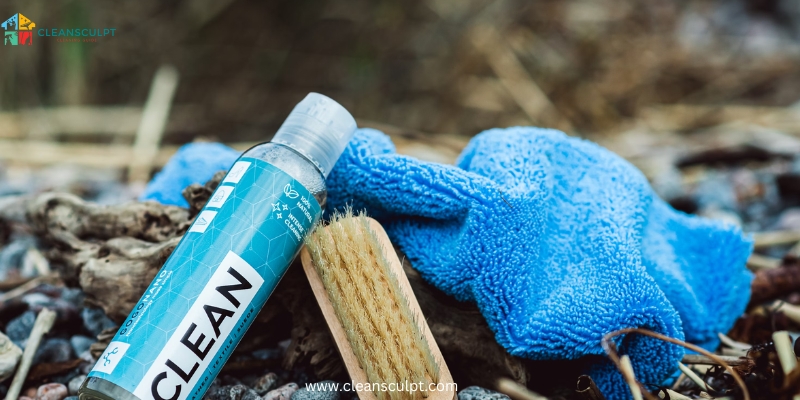HOW TO WASH WOOL BLANKET:Wool blankets are a cozy and luxurious addition to any home, offering warmth and comfort during the colder months. However, they require special care to maintain their softness, durability, and appearance. In this comprehensive guide, we will walk you through the steps to wash your wool blankets properly, ensuring they remain in excellent condition for years to come.
Why Wool Blankets Need Special Care
Wool is a natural fiber known for its warmth, softness, and insulating properties. Unlike synthetic materials, wool can be delicate and prone to shrinking, felting, and losing its shape if not washed correctly. Understanding the right techniques and products to use is crucial to preserving the quality and longevity of your wool blanket.
Preparing Your Wool Blanket for Washing
1. Check the Care Label
Before you begin, always check the care label on your wool blanket. The label provides essential information about the manufacturer’s recommended cleaning methods, which can vary depending on the type of wool and the specific treatment the blanket has undergone.
2. Shake and Air Out
Give your blanket a good shake to remove loose dirt, dust, and debris. Air it out for a few hours, preferably outdoors in a shaded area, to freshen it up and release any trapped odors. This step can help reduce the frequency of washing, which can prolong the life of your blanket.
3. Spot Clean Stains
For minor stains or spots, use a gentle wool detergent or a mixture of water and vinegar. Dab the stained area with a clean cloth, avoiding rubbing, which can damage the fibers and cause pilling. Spot cleaning can be an effective way to address small issues without subjecting the entire blanket to a full wash.
How to Wash Wool Blankets by Hand
Hand washing is the safest method for cleaning wool blankets, as it allows for more control and gentleness. Follow these steps for a thorough yet gentle wash:
1. Fill a Tub with Cold Water
Fill a bathtub or a large basin with cold water. Avoid using hot water, as it can cause wool to shrink and lose its shape. Cold water helps maintain the integrity of the fibers.
2. Add Wool-Safe Detergent
Add a small amount of wool-safe detergent to the water. Wool detergents are specially formulated to clean without stripping the natural oils from the fibers. Avoid using regular laundry detergents, as they can be too harsh and cause damage.
3. Submerge the Blanket
Submerge your wool blanket in the water, gently pressing it down to ensure it’s fully saturated. Let it soak for about 15-20 minutes, allowing the detergent to work its way through the fibers and lift out dirt and oils.
4. Gently Agitate
Gently swish the blanket in the water to loosen dirt and debris. Be careful not to wring, twist, or rub the blanket, as this can cause stretching, felting, and damage to the fibers. Gentle agitation is key to preserving the blanket’s structure.
5. Rinse Thoroughly
Drain the soapy water and refill the tub with clean, cold water. Rinse the blanket by pressing it gently to remove any detergent. Repeat this process until the water runs clear, ensuring all soap residue is removed. Residual detergent can make the fibers feel stiff and uncomfortable.
6. Remove Excess Water
To remove excess water, lay the blanket on a clean, dry towel. Roll the towel and blanket together, pressing gently to absorb moisture. Avoid wringing or twisting the blanket, which can distort its shape and weaken the fibers.
7. Lay Flat to Dry
Lay the blanket flat on a dry surface, reshaping it to its original dimensions. Allow it to air dry naturally, avoiding direct sunlight and heat sources, which can cause shrinkage and damage. Ensure the blanket is completely dry before storing to prevent mold and mildew growth.

How to Machine Wash Wool Blankets
If the care label indicates that machine washing is safe, follow these steps to minimize the risk of damage:
1. Use a Gentle Cycle
Set your washing machine to a gentle or wool cycle, using cold water. These settings reduce agitation and protect the delicate fibers of the wool blanket.
2. Add Wool Detergent
Use a wool-safe detergent, and avoid fabric softeners or bleach, which can damage wool fibers. Fabric softeners can coat the fibers and reduce their natural breathability, while bleach can weaken and discolor the wool.
3. Place the Blanket in a Mesh Bag
Place the blanket in a mesh laundry bag to protect it from excessive agitation and friction against the machine’s drum. This step helps prevent stretching and tangling.
4. Wash on a Short Cycle
Run the washing machine on a short cycle, just enough to clean the blanket without over-agitating it. Overwashing can cause wool to lose its softness and structural integrity.
5. Remove and Dry
After washing, follow the same drying steps as outlined in the hand washing section. Lay the blanket flat to dry, reshaping it as needed to maintain its original form.
Tips for Maintaining Wool Blankets
Regular Brushing
Brush your wool blanket with a soft-bristle brush to keep it fluffy and remove lint, dust, and hair. Regular brushing helps maintain the texture and appearance of the wool fibers.
Air Out Periodically
Air out your blanket every few months to keep it fresh and odor-free. This practice can help reduce the need for frequent washing and extend the life of your blanket.
Store Properly
Store your wool blanket in a cool, dry place. Use a breathable storage bag to protect it from dust, moths, and pests. Avoid plastic bags, as they can trap moisture and lead to mold growth.
Common Mistakes to Avoid
- Using hot water or harsh detergents: Always use cold water and wool-safe detergents to prevent shrinking and damage.
- Wringing or twisting the blanket: Handle your wool blanket gently to avoid distorting its shape and weakening the fibers.
- Hanging the blanket to dry: Always lay your blanket flat to dry to maintain its shape and prevent stretching.
Table: Wool Blanket Care Summary
| Care Step | Description |
| Check Care Label | Read the manufacturer’s instructions. |
| Shake and Air Out | Remove loose dirt and odors. |
| Spot Clean Stains | Use a gentle wool detergent or vinegar solution. |
| Hand Wash | Soak in cold water with wool detergent. Gently agitate and rinse. |
| Machine Wash | Use a gentle cycle with wool detergent. Place in a mesh bag. |
| Drying | Lay flat to dry. Avoid hanging or using a dryer. |
| Regular Brushing | Brush with a soft-bristle brush to maintain fluffiness. |
| Air Out Periodically | Air out every few months to keep fresh. |
| Proper Storage | Store in a cool, dry place in a breathable bag. |
Frequently Asked Questions (FAQs)
Q1: Can I use regular laundry detergent to wash my wool blanket?
A1: No, regular laundry detergents can be too harsh for wool. They can strip the natural oils from the fibers, causing them to become dry and brittle. Always use a detergent specifically designed for wool to prevent damage and maintain the softness of your blanket.
Q2: How often should I wash my wool blanket?
A2: Wool blankets do not need frequent washing. Depending on usage, washing them once or twice a year is usually sufficient. Spot cleaning and airing out can help maintain freshness between washes. Over-washing can wear down the fibers and reduce the blanket’s lifespan.
Q3: Can I dry my wool blanket in the dryer?
A3: It’s best to avoid using a dryer for wool blankets. The heat can cause shrinkage and damage the fibers. Always air dry your wool blanket by laying it flat. If you must use a dryer, use a no-heat or air-only setting, and monitor the process closely.
Q4: What should I do if my wool blanket shrinks?
A4: If your wool blanket shrinks, try gently stretching it back to its original size while it’s still damp. Lay it flat to dry and reshape as needed. If the shrinkage is severe, you may need to consult a professional cleaner for assistance.
Q5: Is it safe to use fabric softener on wool blankets?
A5: Fabric softeners can coat wool fibers and reduce their natural breathability. This can make the blanket less effective at regulating temperature and moisture. It’s best to avoid using fabric softeners on wool blankets and instead rely on proper washing and drying techniques to maintain softness.
Q6: Can I use vinegar to wash my wool blanket?
A6: Yes, vinegar can be used as a natural fabric softener and stain remover. Dilute it with water and use it sparingly to avoid overpowering the wool fibers. Vinegar helps break down soap residue and can help remove mild odors.
Q7: How do I remove pet hair from my wool blanket?
A7: Use a lint roller or a soft-bristle brush to remove pet hair. Regularly brushing your blanket can help prevent hair buildup and keep it looking clean and tidy. For stubborn hair, you can also use a vacuum cleaner with a brush attachment on a low setting.
Conclusion
By following these guidelines, you can keep your wool blankets clean, cozy, and in excellent condition. For more cleaning tips and guides, visit Clean Sculpt. We’re here to help you maintain a pristine and comfortable home.



















